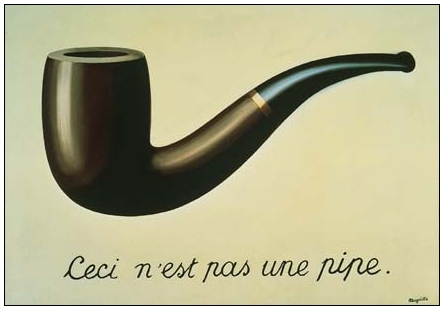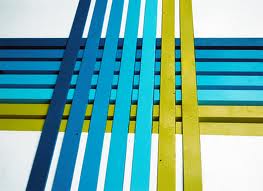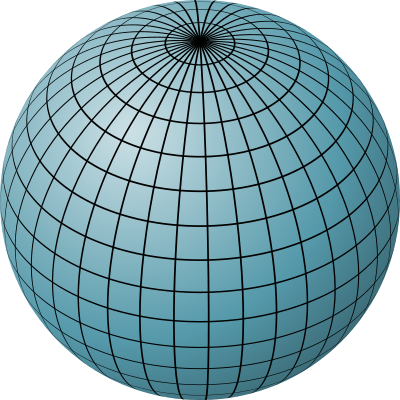|
Craig White's Literature Courses Terms / Themes |
This is not a sphere; maybe it is. |
|
Mimesis (a.k.a. imitation, representation) |
Mimesis (Oxford English Dictionary) 1b. Imitation; spec. the representation or imitation of the real world in (a work of) art, literature, etc.
Etymology
From Greek mimesis, from mimeisthai (to imitate). (A few cousins of this word are
mimic, mime, and mimosa.)
According to mimesis, art (or literature) imitates reality, nature, or life. (This idea is so ancient and widespread that, as with "art's purpose is to entertain and inform," variations in wording and phrasing abound.)
For instance, Hamlet 3.2 on the "the purpose of playing [or drama], whose end, both at the first and now, was and is, to hold as 'twere the mirror up to nature."
The idea of mimesis, which pervades classical theories of art and literature, is stated directly in Aristotle's Physics (350BCE): he techne mimeitai ten physin, usually translated as 'Art imitates nature'—or reality—or life.
From an audience's perspective, art's fabrication of the or a world is often felt when a viewer feels absorbed in a film or drama, or a reader becomes absorbed or engrossed in a novel as though the imaginary world described were realer than the world in which the reader sits and breathes.
The idea of mimesis is so conventional and pervasive as to become unknowable, or where it begins or ends. A few qualities:
Not only does art imitate life, but life imitates art.
![]()
Mimesis may also distinguish types of writing such as creative writing or fiction versus critical writing or nonfiction.
Critical writing or nonfiction refers to a reality outside the text—for instance, a news story refers to an event that happened and describes it, or a literary essay describes and evaluates a work of literature.
Creative writing is more mimetic in that it creates a world in and of itself.
A reader may feel "drawn in" to a novel or movie that feels realer or more compelling than the reader's own reality.
In contrast, when reading a news article or a critical essay, a reader selects information and applies the information to the reality outside the text (even if the reality is another text).
Either type of writing may do some of either--that is, the best nonfiction or critical writing makes sense of the world so much that the world may become realer in the text than it is outside; or fiction may provide information about the nature of the world beyond the text, as in historical fiction.
Critical and analytic writing pulls the world apart into themes, theses, ideas, positions, opinions, divisions, parts of the world to be defended, developed, or attacked.
Creative writing, in imitating the world or its realities, puts everything back together again, so that all themes or ideas are exposed as overly simple and re-complicated, just as real life does to any and all ideas. "It is what it is."
![]()
from Aristotle. Poetics. ca. 340 BCE.
I. Epic poetry and tragedy, comedy also . . . are all in their general conception modes of imitation [or representation]. They differ, however, from one another in three respects—the medium, the objects, the manner or mode of imitation, being in each case distinct. . . .
IV. Poetry in general seems to have sprung from two causes, each of them lying deep in our nature.
First, the instinct of imitation is implanted in [humanity] from childhood, one difference between [the human] and other animals being that people are the most imitative of living creatures, and through imitation we learn our earliest lessons;
and [second,] no less universal is the pleasure felt in things imitated . . . . The cause of this again is, that to learn gives the liveliest pleasure, not only to philosophers but to [humans] in general; whose capacity, however, of learning is more limited. Thus the reason why men enjoy seeing a likeness is, that in contemplating it they find themselves learning or inferring, and saying perhaps, "Ah, that is he." For if you happen not to have seen the original, the pleasure will be due not to the imitation as such, but to the execution, the coloring, or some such other cause.
Imitation, then is one instinct of our nature. . . .
![]()
from Plato,
The Republic. c. 373 BCE. Benjamin Jowett, translator.
The Dialogues of Plato, 4th ed.
(Oxford, Eng.: Clarendon, 1953); reprinted in Hazard Adams, ed.
Critical Theory since Plato (San Diego: Harcourt Brace Jovanovich,
1971): 19-40.
God [or reality] is always to
be represented as he truly is, whatever be the
sort of poetry, epic, lyric, or tragic, in which the representation
is given. . . .
[N]arration may be either
simple narration, or imitation, or a
union of the two. . . .
[S]ome poetry and mythology
are wholly imitative ( . . . I mean
tragedy and comedy); there is likewise the opposite style, in which the poet
is the only speaker--of this the dithyramb [or
lyric] affords the best example; and
the combination of both is found in epic
[or, now, the novel] . . . .
Usage
"Mimesis was seldom the only purpose of art, but always a central one: to
make pictures look 'real.' After photography, however, all this changed." —
Richard Nilsen; Perceptions Always in Flux; The Arizona Republic (Phoenix); May
30, 2004.
"Civilizations, he wrote, are invented by a creative minority that appears
from time to time and creates art, ideas, forms and substance. It forges an
intellectual universe, which the non-creative majority enters by mimesis,
adopting, following and embellishing, which may lead to high culture." — T.R.
Fehrenbach; Creativity Builds Great Civilizations, Followed By ... Not Much; San
Antonio Express-News (Texas); Jun 27, 2004.
![]()
"Virtual reality" is, like art, a human creation that is not nature or reality or even biological life but rather a representation in which we imaginatively share (with physical borders increasingly blurry).
Language itself is virtual reality. These words or signs are not what they describe but only cultural conventions that would be meaningless to anyone without the necessary language training; compare computer languages.
A famous example that reinforces the difference between art and reality is the surrealist painter Rene Magritte's La Trahison des Images or The Treachery of Images, a painting of a smoking pipe whose inscription reads, "This is not a pipe."

Then again, the pipe isn't nature either but a human artifact. Such multi-layered complications are a reason why mimesis is known but only briefly discussed.
web definitions:
the imitative
representation of nature and human behavior in art and literature; the
representation of another person's words in a speech
wordnetweb.princeton.edu/perl/webwn
The
representation of aspects of the real world, especially human actions, in
literature and art; mimicry . . .
en.wiktionary.org/wiki/mimesis
mimetic - characterized by or of the nature of or using mimesis; "a mimetic dance"; "the mimetic presentation of images"
mimetic -
exhibiting mimicry; "mimetic coloring of a butterfly"; "the mimetic tendency of
infancy"- R.W.Hamilton
wordnetweb.princeton.edu/perl/webwn

